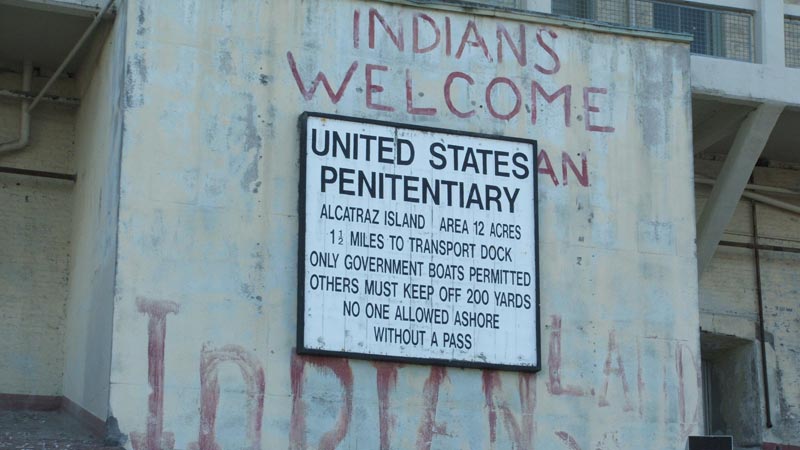My first visit to Alcatraz was about a dozen years ago, when I boarded a ferry at 5am with my two young daughters in tow to commemorate Un-Thanksgiving—or, as it’s also known, the Indigenous People’s Sunrise Gathering. With daughters still too young to fully digest critical analysis about the historic oppression of American Indians, I figured that dragging them out of bed and taking them to a giant rock in the middle of the bay before the sun was up would at least surely spark some honest conversations about American history.
This year marks the 40th anniversary of the first Sunrise Gathering, and as Ai Weiwei’s installation on Alcatraz sparks dialogue about art and its place in oppressive environments, the pre-dawn event remains as relevant as ever.
The ceremonies began in 1975 as a way to commemorate the 1969-71 occupation of Alcatraz by the Indians of All Tribes, an inter-tribal, all-inclusive nation of American Indians. The initial intentions in 1969 were for Alcatraz—a federally owned piece of land previously belonging to the Ohlone Nation—to be reclaimed and to house educational services and a clinic for its inhabitants. The occupation of the rock was also used as a bargaining tool to negotiate terms of the Indian Self-Determination and Education Assistance Act and the Indian Child Welfare Act, and to gain rights to practice traditional native fishing and hunting. Although the occupation lasted only 18 months, many deemed it a success, as it brought awareness of the struggles faced by American Indians.
Initially, I too went to Alcatraz as my own tiny act of political resistance. But over the years it also turned into something more personal, emotional—dare I say spiritual. Gathering in the dark with my daughters along with friends and strangers, huddling together against the fog or wind and waiting for the sunrise became a semi-regular family tradition; we’ve participated most years since our first voyage. And while the gathering isn’t necessarily a spectator event, like Ai Weiwei’s exhibit, there is certainly something deeply moving about witnessing hundreds of people gathered around a fire, as dancers call up the sun.
Attending the Sunrise Ceremony takes a commitment, though, especially when driving into San Francisco from out of town; the ferries begin leaving Pier 33 at 4:15am, and the whole ceremony is over, and everyone off of the rock, by 9am.


